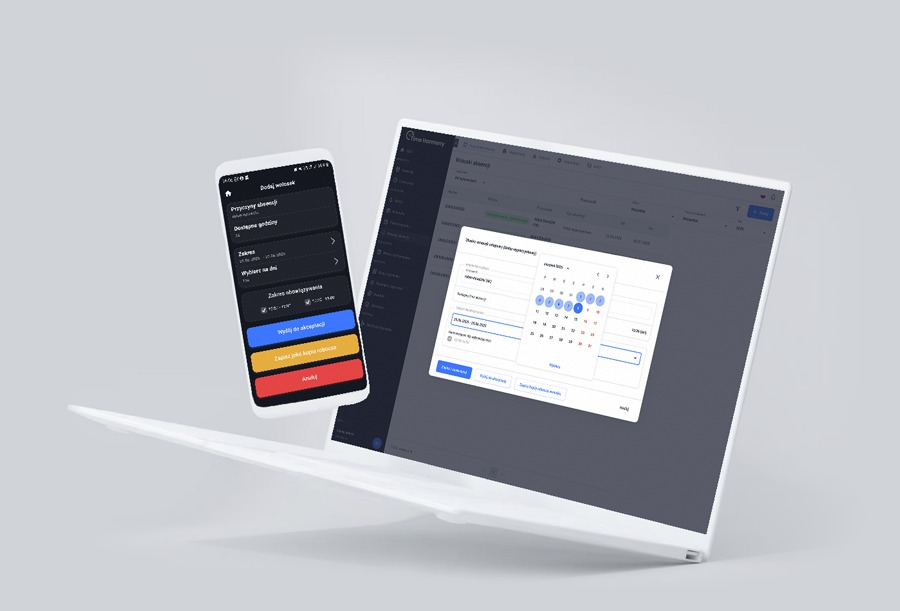Accounting for working time is one of the key tasks of every employer. The Labour Code imposes on companies the obligation to keep records of working time and correctly calculate allowances for overtime, night hours or work on holidays. In practice, especially in large organizations, manual accounting of this data is associated with a high risk of errors, disputes and delays.
The solution is automatic settlement of working time in accordance with the Labor Code, which is offered by the Time Harmony system. This tool allows not only to improve HR and payroll processes, but also to increase transparency in relations with employees and reduce operating costs.
Key features of Time Harmony
-
Fully automatic settlement of working time and records
The system registers working time in various distribution systems (basic, equivalent, task-based) and then automatically recalculates it in accordance with applicable regulations. HR departments do not have to manually analyze work sheets or tables – all data is available in one view.
-
Margins and rounding – realistic working time settlement
The employer can set the rules for settling lateness, early departures or breaks, as well as introduce rounding to 5, 10 or 15 minutes. This solution organizes the records and eliminates disputes about minute differences.
-
Automatic settlement of working time in overtime and night hours
Time Harmony takes into account daily overtime (+50%, +100%), average weekly overtime, as well as night work. The settlements are fully compliant with the Labour Code, including Article 151 of the Labour Code.
-
Support for holidays and days off
The system automatically identifies work on Sundays, holidays and other days off resulting from a five-day working week. The financial allowance or the receipt of a day off are calculated in accordance with the regulations (Article 151^7 of the Labour Code).
-
Integration with payroll systems
Time Harmony allows you to export data to HR and payroll systems, both manually and via an API. As a result, the payroll process is faster and the risk of mistakes is minimized.
Practical applications of automatic settlement of working time in various industries
- Logistics and warehouses – control over overtime and shift work in 24/7 mode.
- Production – settlement of work in the equivalent system and on holidays.
- Back office – clear reports for office employees, easy holiday planning.
- Services – monitoring of working time in dispersed teams and on projects. Thanks to its flexible settings, the system works well for companies of all sizes – from medium-sized enterprises to large corporations.
Why is it worth betting on automatic settlement of working time?
- Compliance with the Labor Code – no risk of violations of the law and penalties.• Greater HR efficiency – fewer tedious, manual activities.• Cost reduction – control over overtime and work planning.• Transparency – employees receive clear, objective settlements.• Better business decisions – access to up-to-date and reliable data on working time.
Automatic settlement of working time - summary
Automatic settlement of working time in accordance with the Labour Code is not only a convenience today, but also a necessity. Companies that implement solutions such as Time Harmony gain real advantages: more efficient HR and payroll processes, lower administrative costs and greater legal security.
Contact us and see how Time Harmony can improve your organization's time accounting.

Easily manage your company's working time










